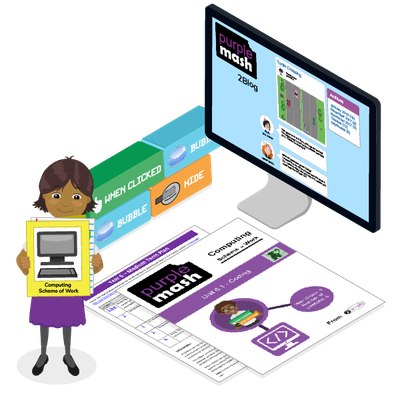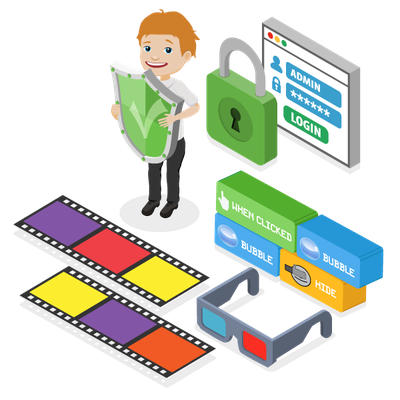Purple Mash and Ofsted's High Quality Computing Curriculum: Day 3
May 26, 2022
On 16th May, Ofsted published their research review into the computing curriculum, to ‘identify factors that can contribute to a high-quality school computing curriculum, assessment, pedagogy, and systems. We’ve taken a close look at the report and identified how Purple Mash meets each of those factors, and throughout this week we're posting a series of blog posts outlining exactly how it does this. Each daily blog will cover 2-3 of the factors in depth, looking at what the report says and highlighting where the Purple Mash Computing Scheme of Work supports them.
For day 3 of our series, we look at computational thinking and problem solving, information technology, and digital literacy.
Computational thinking and problem-solving
Many units of the Purple Mash Computing Scheme of Work relate to logical thought development and logical processing of information not just through coding units; where logical structuring and design is explicit in algorithm and program design, but throughout the units within the scheme.
Algorithms are explicitly taught from year 1, where the concept is introduced in the Lego Builders unit and further developed through coding. Children are introduced to a variety of tools to use to help them think algorithmically and use this to plan their coding work from simple labelled pictures at the earliest stages to flowcharts using 2Chart in key stage 2. Children's algorithmic thinking ability will become more sophisticated in line with their programming knowledge and ability to use the full design process cycle to meet the requirements of a coding task.
Abstraction is introduced, especially in coding, from the very start and explicitly referred to as the term 'abstraction' from year 5. However, children will have been using abstraction from year 1 and therefore introducing the vocabulary once they have concrete experience of doing this, fits with, and develops, their computational thinking vocabulary without making the concept appear more complex than it is.
Information Technology
The report states:
‘high-quality computing education may have the following features:
- The curriculum to teach children how to create digital artefacts is underpinned by specified declarative and procedural knowledge.
- Children’ schemata of computing contexts is built through new and repeated encounters with contexts to build a breadth and depth of knowledge.’ (Ofsted, 2022)

The scheme of work includes both the declarative and procedural knowledge required to understand and use technology as part of the units and to transfer these skills to future tools. Children never simply follow steps to create a digital artefact but use the technological tools for a purpose suited to future competency. For example, using music tools to explore music itself and then create their own compositions and in later years create compositions to incorporate into other digital artefacts such as presentations or programming games. The varied contexts that children will encounter also ensure breadth and depth of knowledge and skills.

Digital literacy
The report states:
‘high-quality computing education may have the following features
- Teachers should not make assumptions about pupils’ prior knowledge within digital literacy.
- Knowledge and skills are clearly identified to teach pupils how to use computing devices.
- The curriculum carefully sequences knowledge related to e-safety to ensure that subject content is appropriate for pupils at each stage of their education.’ (Ofsted, 2022)
Digital literacy is taught in discreet online safety units but also integrated throughout all units where children share work, collaborate and discuss features of online safety. The scheme is progressive to suit the age of the children being taught and the issues that are most relevant to their age of development. However, this does not mean that children who missed previous sessions will be disadvantaged, because all topics are revisited, recapped and built upon at the appropriate level. For example, children have lessons that focus on digital footprints at several stages but each time at a level meaningful to the children’s ages and recapping what a digital footprint is.
This is Part 3 of a series. To read the other parts, click the links below:
Purple Mash and Ofsted's High Quality Computing Curriculum: Day 1
Purple Mash and Ofsted's High Quality Computing Curriculum: Day 2
Purple Mash and Ofsted's High Quality Computing Curriculum: Day 4
Try the scheme for free
A free version of the Purple Mash Computing Scheme of Work is available to download here. You can also try Purple Mash for free to access the full version.